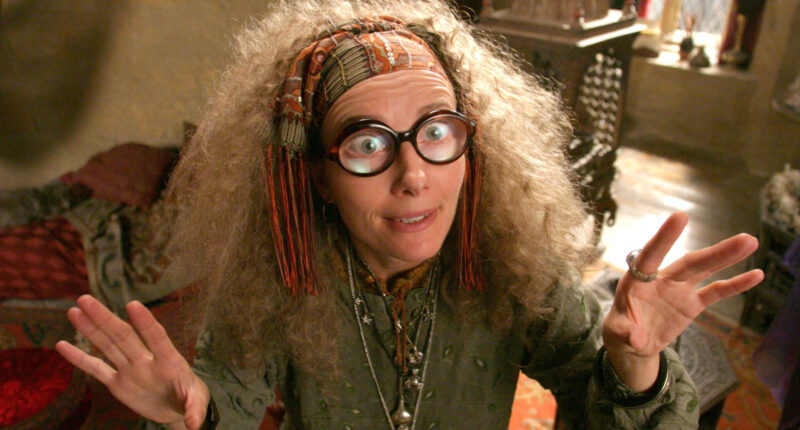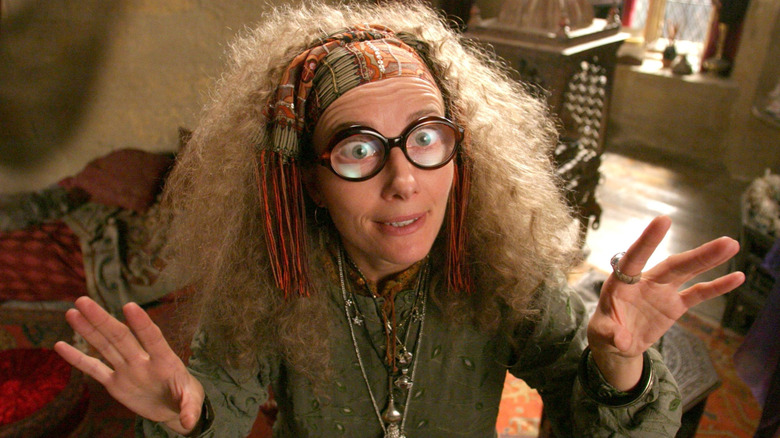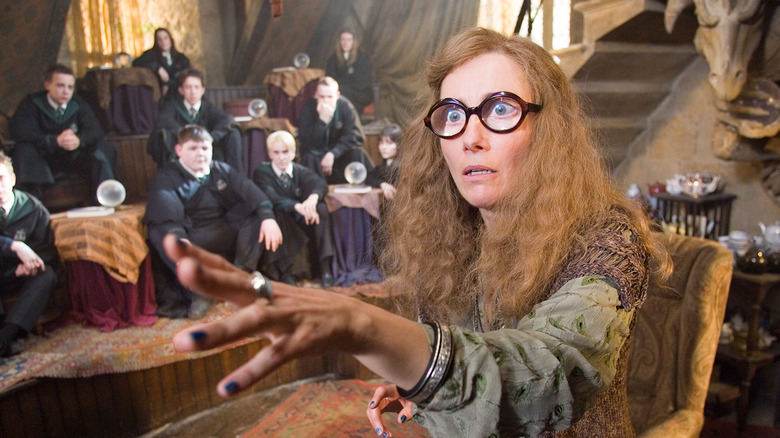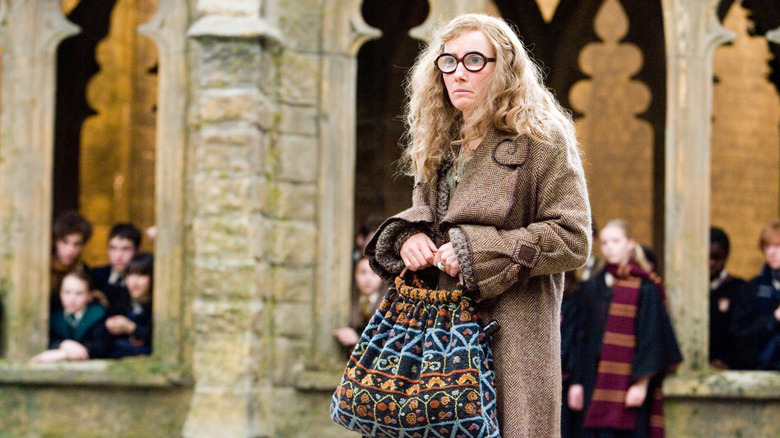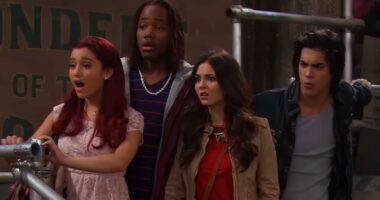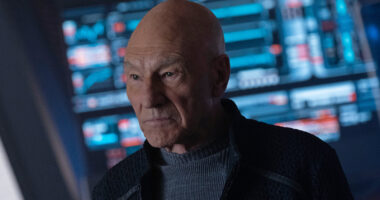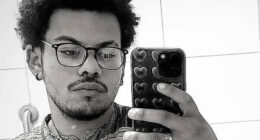Share this @internewscast.com
This article contains a discussion of addiction.
Dame Emma Thompson is undeniably one of the most talented actors of our time. In 2018, she was honored with an Order of the British Empire by Queen Elizabeth II, a testament to her remarkable contributions to the film industry. Thompson’s illustrious career boasts a plethora of iconic movies such as “Howards End,” “Henry V,” “Much Ado About Nothing,” “The Remains of the Day,” “In the Name of the Father,” “Love Actually,” “Saving Mr. Banks,” “Stranger Than Fiction,” and “Nanny McPhee.” Her performances have not only won her numerous award nominations but also two Academy Awards; one for her leading role in “Howards End” and another for her screenplay adaptation of Jane Austen’s “Sense & Sensibility.”
For those who may not be avid followers of this esteemed actress, it may come as a surprise that Thompson holds a significant role in the “Harry Potter” series, which captivated audiences from 2001 to 2011. Although she wasn’t featured in every installment, Thompson made her first appearance in the third movie, 2004’s “Harry Potter and the Prisoner of Azkaban.” She joined fellow “Love Actually” star Alan Rickman at the fictional Hogwarts School of Witchcraft and Wizardry (Rickman famously played Severus Snape, the Potions master, throughout the series). Thompson reprised her role in the fifth film, “Order of the Phoenix,” and made a return in the latter part of the final movie, “Deathly Hallows — Part II.” So, which character does she portray?
For those unfamiliar with her role, Thompson plays Professor Sybil Trelawney, the slightly eccentric instructor of Divination at Hogwarts. The character of Professor Trelawney is introduced in the third film because it’s at this point that the central Hogwarts trio — Ron Weasley (Rupert Grint), Hermione Granger (Emma Watson), and Harry Potter (Daniel Radcliffe) — begin their Divination classes in their third year. But what exactly is Professor Trelawney all about?
Who is Sybil Trelawney within the world of Harry Potter?
When we first meet Professor Trelawney on the page and screen in “Harry Potter and the Prisoner of Azkaban,” all signs point to the fact that she’s an enormous fraud. Divination is basically fortune-telling — students are supposed to “divine” the future using tea leaves and crystal balls — and right off the bat, she makes a number of alarming “predictions,” so to speak. After announcing that books will “only go so far” in the study of Divination, Professor Trelawney tells a student sitting next to the flame-headed Ron to “beware a red-haired man” and then announces, “Unfortunately, classes will be disrupted in February by a nasty bout of flu. I myself will lose my voice. And around Easter, one of our number will leave us forever.” If that’s not ominous, what is? (Also, that last thing isn’t about anyone dying. Hermione simply quits Divination classes in a fit of rage, so that does sort of come true.)
One of Professor Trelawney’s favorite hobbies, if you can call it that, is predicting Harry’s demise in a variety of ways; in their very first class, she claims to see the Grim, an omen of death, in his tea leaves, and she more or less repeats this sort of parlor trick every time Harry is unlucky enough to be in her presence. (Thompson, unsurprisingly, plays her beautifully, behind an enormous wig adorned with hair decorations and the massive spectacles described in the original books.) As the books continue, though, Professor Trelawney becomes a sadder figure, especially when the sinister Ministry of Magic plant Dolores Umbridge (played in the films by Imelda Staunton) shows up in “Order of the Phoenix” to judge and terrorize the staff.
This is a bigger throughline in the books than the films — and we’ll circle back to what was cut in a bit — but the point is that Professor Trelawney struggles under Umbridge’s tenure, particularly when she usurps the job of Hogwarts’ Headmaster after ousting Albus Dumbledore (Michael Gambon). Umbridge tries to fire Professor Trelawney, who is visibly intoxicated and has been seen (by Harry) around the castle with empty wine bottles; thankfully for Professor Trelawney, she’s defended by the unlikeliest of allies, Professor Minerva McGonagall (another Dame, the late Maggie Smith). Despite Professor McGonagall’s disdain for Divination and her colleague, she insists that, though she can’t stop Professor Trelawney from losing her job, that she at least be permitted to live in the castle. When we catch up with Professor Trelawney in “Deathly Hallows — Part 2,” she’s lobbing crystal balls at enemy forces during the Battle of Hogwarts.
Some of Professor Trelawney’s big moments in Harry Potter were cut from the movies
Frankly, a lot of Professor Trelawney’s storylines and appearances are cut in the “Harry Potter” movies, which makes sense; the books contain many more everyday scenes set in Harry, Ron, and Hermione’s classes than the films for the sake of on-screen run times. This is why we know, beyond any shadow of a doubt in the books, that Professor Trelawney is quite fond of incorrectly telling Harry he’s going to die a gruesome and imminent death; it takes the sting out of the whole Grim thing when she, you know, keeps doing it. In terms of Professor Trelawney’s alcohol consumption, this is also much more prominent in the books; in “Harry Potter and the Half-Blood Prince,” Harry often runs into Professor Trelawney hiding empty bottles in the school’s magical and mysterious Room of Requirement.
Perhaps the biggest omission, though, is that the movies never fully explain the fact that Professor Trelawney makes the prophecy that ultimately defines Harry’s life. As Dumbledore tells Harry, he was interviewing a much younger Professor Trelawney for the Divination post at Hogwarts when, all of a sudden, she went into a trance and delivered the following prediction:
“The one with the power to vanquish the Dark Lord approaches… born to those who have thrice defied him, born as the seventh month dies… and the Dark Lord will mark him as his equal, but he will have power the Dark Lord knows not… and either must die at the hand of the other for neither can live while the other survives… the one with the power to vanquish the Dark Lord will be born as the seventh month dies….”
This, obviously, refers to Harry’s lifelong fight against the Dark Lord Voldemort (Ralph Fiennes in the movies), and because Voldemort sends his sentry, Snape, to eavesdrop on Dumbledore and Trelawney’s meeting, he doesn’t hear the entire thing (which leads to Voldemort’s downfall). Though the prophecy could have referred to Harry’s Gryffindor classmate Neville Longbottom, played in the films by Matthew Lewis — another plot point the films omits — based on their birthdays and Dark Lord-defying parents, Voldemort chooses Harry and “marks him as his equal” with Harry’s scar. The rest is history, and it’s all thanks to Professor Trelawney, really; it’s a shame we didn’t get to see Emma Thompson perform this particular scene in the “Harry Potter” films.
The “Harry Potter” movies are streaming on Peacock now.
If you or anyone you know needs help with addiction issues, help is available. Visit the Substance Abuse and Mental Health Services Administration website or contact SAMHSA’s National Helpline at 1-800-662-HELP (4357).
